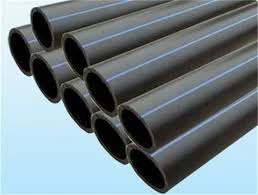Oct . 15, 2024 08:04 Back to list
pvc ppr pipes and fittings
Understanding PVC and PPR Pipes and Fittings
When it comes to modern plumbing systems, the choice of materials is crucial for ensuring durability, efficiency, and reliability. Two of the most popular types of piping systems are Polyvinyl Chloride (PVC) and Polypropylene Random Copolymer (PPR). Both PVC and PPR pipes and fittings are widely used in residential and commercial applications, providing distinct advantages for various plumbing needs.
PVC Pipes and Fittings
PVC is a synthetic plastic polymer that has become a staple in plumbing and construction due to its versatility and cost-effectiveness. It is known for being lightweight, easy to install, and resistant to corrosion and chemicals. PVC pipes are commonly used for drainage, waste, and vent systems. They are also employed in water supply lines, particularly for cold water.
One of the standout features of PVC is its smooth interior surface, which reduces friction and enhances flow efficiency. Additionally, PVC is non-toxic and safe for potable water systems, making it a reliable choice for drinking water applications. The availability of various fittings, such as elbows, tees, and junctions, further enhances the adaptability of PVC systems, allowing for complex plumbing layouts.
PPR Pipes and Fittings
pvc ppr pipes and fittings

PPR pipes, on the other hand, have gained popularity due to their robustness and resistance to high temperatures and pressures. Made from a type of polypropylene, PPR pipes are particularly well-suited for hot and cold water systems. They can withstand temperatures up to 95°C (203°F), making them ideal for heating applications.
One significant advantage of PPR is its fusion welding capability, which allows for seamless connections between pipes and fittings. This results in a more secure joint that minimizes the risk of leaks compared to traditional threaded connections. Furthermore, PPR pipes are resistant to scale and corrosion, which contributes to their longevity and reduces maintenance costs.
Choosing Between PVC and PPR
The decision between PVC and PPR often depends on the specific plumbing needs of a project. For applications involving cold water or drainage, PVC is generally the more economical option. Conversely, for systems that handle hot water or require high resistance to pressure, PPR is often the preferred choice.
In summary, both PVC and PPR pipes and fittings play critical roles in modern plumbing systems. Understanding their unique properties can help homeowners and professionals make informed decisions that enhance the performance and longevity of plumbing installations. Ultimately, whether one opts for PVC or PPR, the key is to ensure quality materials that meet the specific demands of the application at hand.
-
High-Quality PPR Pipes and Fittings Durable ERA PPR & PVC PPR Solutions
NewsJul.08,2025
-
Black HDPE Cutting Board - Durable, Non-Porous & Food Safe HDPE Plastic Cutting Board
NewsJul.08,2025
-
High-Quality CPVC Panel Durable HDPE & PVC Panels Supplier
NewsJul.08,2025
-
Double PE Welding Rod Supplier - High Strength, Durable & Versatile Welding Solutions
NewsJul.07,2025
-
High-Quality PVC-O Pipe Supplier Durable 75mm PVC Pipe & Connections Leading PVC Pipe Company
NewsJul.07,2025
-
HDPE Drainage Pipe Supplier – Durable & Corrosion-Resistant Solutions
NewsJul.06,2025

